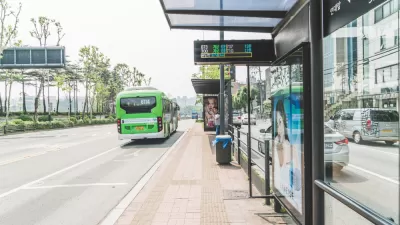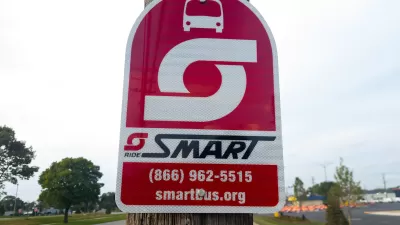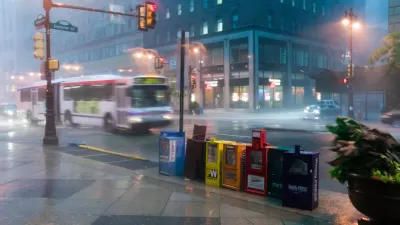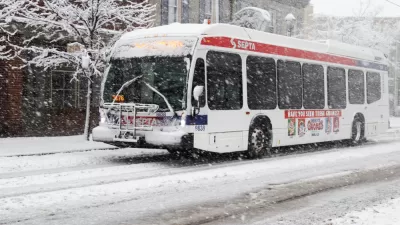Seoul simplified its routes and kept its key bus lanes clear of traffic to revitalize it's transit system.

The current ridership woes of cities in the United States are not unique in history, and American cities would do well to learn from the example of Seoul, Andy Furillo writes for Mobility Labs. "In 2002, average bus loads were less than half what they were in 1989. Private operators were going bankrupt, and the government subsidies required to keep remaining bus services running had multiplied by 10 in just three years," Furillo reports.
But rather than cutting transit, the city sought to improve the bus service. Making routes simpler—adding branch systems, regulating bus operators so they couldn't offer redundant routes and investing in a massive public information campaign. The city's mayor, Lee Myung-bak, "personally attended nearly 30 briefings for Seoul’s 16,000 bus drivers to emphasize his plans to protect their rights, increase their wages, and improve their workplace environment, helping ensure the labor community was on board with the reforms," Furillo writes.
Seoul also invested in keeping its bus lanes clear of other traffic. "On some corridors, bus speeds doubled almost immediately after the overhaul, and travel times improved for cars as well," Furillo reports. Unsurprisingly, faster buses led to ridership growth that continued even after the overhaul was a year old.
FULL STORY: What American cities can learn from Seoul’s 2004 bus redesign

Planetizen Federal Action Tracker
A weekly monitor of how Trump’s orders and actions are impacting planners and planning in America.

Chicago’s Ghost Rails
Just beneath the surface of the modern city lie the remnants of its expansive early 20th-century streetcar system.

San Antonio and Austin are Fusing Into one Massive Megaregion
The region spanning the two central Texas cities is growing fast, posing challenges for local infrastructure and water supplies.

Since Zion's Shuttles Went Electric “The Smog is Gone”
Visitors to Zion National Park can enjoy the canyon via the nation’s first fully electric park shuttle system.

Trump Distributing DOT Safety Funds at 1/10 Rate of Biden
Funds for Safe Streets and other transportation safety and equity programs are being held up by administrative reviews and conflicts with the Trump administration’s priorities.

German Cities Subsidize Taxis for Women Amid Wave of Violence
Free or low-cost taxi rides can help women navigate cities more safely, but critics say the programs don't address the root causes of violence against women.
Urban Design for Planners 1: Software Tools
This six-course series explores essential urban design concepts using open source software and equips planners with the tools they need to participate fully in the urban design process.
Planning for Universal Design
Learn the tools for implementing Universal Design in planning regulations.
planning NEXT
Appalachian Highlands Housing Partners
Mpact (founded as Rail~Volution)
City of Camden Redevelopment Agency
City of Astoria
City of Portland
City of Laramie





























